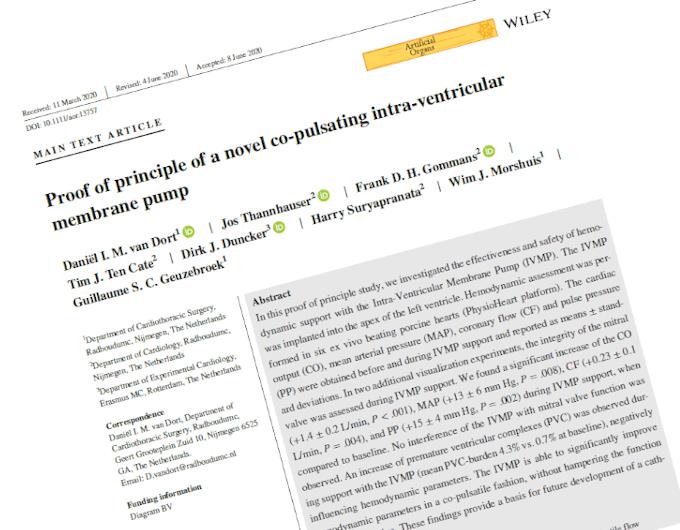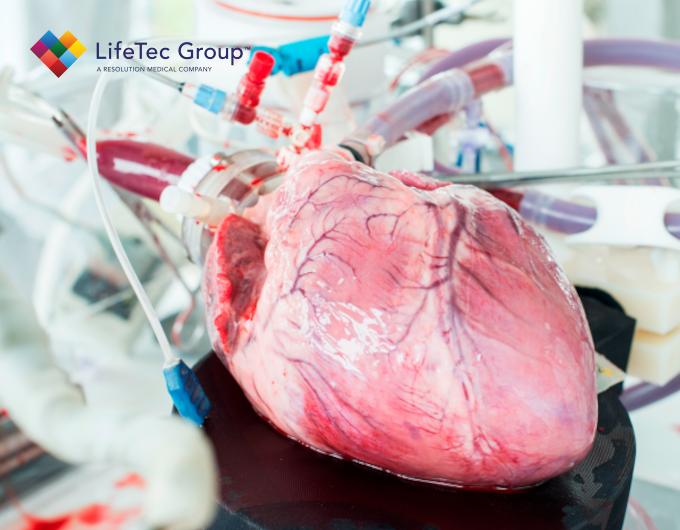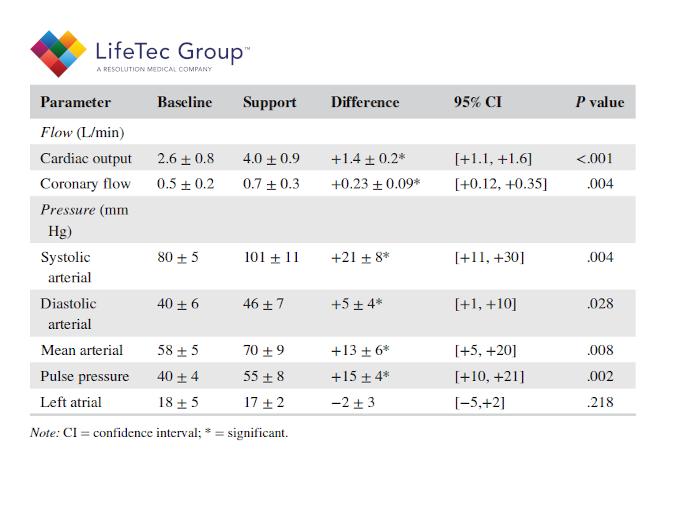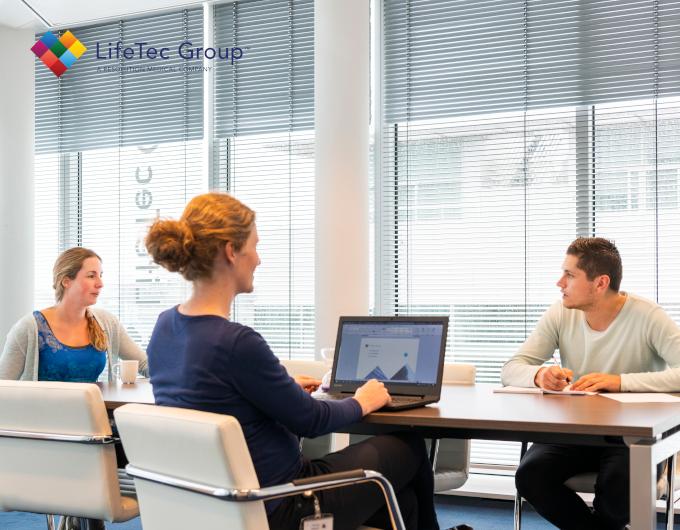Paper in Artificial Organs!
"Proof of principle of a novel co-pulsating intra-ventricular membrane pump"
In the December 2020 edition of the Journal of Artificial Organs, a scientific article was published on CardiacBooster's new concept for ventricular assist of patients with heart failure. In this proof of concept study, in a close collaboration of CardiacBooster and LifeTec Group, the PhysioHeart™ isolated beating heart platform was used to implant the prototype ventricular assist balloon and investigate the hemodynamic responses to ventricular assist in a real beating heart setting. We are proud to share that the early results for this ventricular assist concept were promising.

The platform
The PhysioHeart Platform provided a great environment for investigating the performance of the device concept. Inside the body, it is often difficult to control the loading condition of the heart, to conduct specific and accurate measurements or to visualize device interaction with the heart. And that is exactly where the PhysioHeart provides a solution. As the heart is isolated from it's body, the PhysioHeart allows direct access to the cardiac tissue and arteries. Sensors can be placed anywhere around the heart, there is full control of venous filling pressures and arterial pressures and a stable heart rate can be maintained, providing detailed information on the performance gains of using the device that is very hard to obtain in-vivo. On top of this, PhysioHeart protocols allowed to recreate heart failure scenarios to investigate where the ventricular assist would be most effictive, and this can be done without concerns for animal welfare during the study.

The Study
In the study, 6 PhysioHeart experiments were performed to investigate cardiac support in terms of hemodynamic performance improvements caused by the intraventricular balloons. Prior to reviving the hearts, the balloon devices were placed in the apex of the left ventricle. The balloon devices were cyclically inflated using an intra-aortic balloon pump driver via a transapical tube, where balloon inflation was synchronized with the onset of each cardiac contraction. The PhysioHearts were revived to a normal hemodynamic state, and subsequently cardiac contraction was decreased over time according to protocols until the hearts were in a state representing cardiogenic shock. At specific predefined conditions, pressure and flow conditions describing the cardiac performance were recorded with and without activition of the intraventricular support device.

Results and perspective
Significant improvements resulting from the CardiacBooster support device were observed in cardiac output and coronary flow, and systolic pressure augmentation was present. As reported in full detail in the article, the cardiac output increased by more than 50% by actuation of the device in the cardiogenic shock state of the heart model, while coronary flow and mean aortic pressure increased by 46% and 22% respectively.
Although these early results are promising, the device concept is still in an early phase. In the near future, CardiacBooster will continue the development of the intraventricular support prototype system to a minimally invasive device and further optimize it for future studies.

What's in it for you?
The preclinical research described in the publication above is a typical example of how LifeTec Group supports projects in a realistic and relevant way. Typically in early stage device development results are generated in benchtop simulators that provide accurate and reproducible results. Subsequently, animal experiments provide a quite different environment and anatomy with their specific challenges in measurements and visualization. LifeTec Group focuses on combining the advantages of these two worlds: by application of organ models in controllable environments we can provide a relevant experimental setting as well as good measurement and visualization possibilities.
If you're involved in device development and preparing for animal or preclinical trial, our platforms can help you to collect quantitative data and visual information of your entire procedure: from implantation, navigation and device deployment using a delivery system, to functional assessment before and after device implantation.
The same realistic setting is of great value to clinical training of new procedures on innovative devices and treatments to interventional teams in the hospitals: you can train your clinical partners and provide them with realistic hands-on experience of your device implantation procedure, and how to clinically image both the device delivery and assess the success of the implantation before the first patients are treated.
Please feel free to contact us if you're interested in how LifeTec Group could support your project!

The published article:
van Dort DIM, Thannhauser J, Gommans FDH, et al.
Proof of principle of a novel co-pulsating intra-ventricular membrane pump.
Artif Organs. 2020;00:1–9.
Interested in more about what we do at LifeTec Group? Contact us!
Call at +31 40 2989393 Or e-mail us
